“But I Was Only Trying To Help…!”
In many organizations today, coaching is regarded as a crucial skill for leaders, managers, Scrum Masters and consultants who support teams developing the skills and practices of self-organization.
In our course Coaching skills for Leaders, we teach the distinction between four different stances people can take as they help others:
- The Doctor
- The Expert
- The Pair of Hands
- The Coach
All of these stances can be helpful in different situations and relationships, yet it is the coaching stance that often requires the biggest stretch for people. This post will describe for you each of these four stances from the perspective of the helper. The distinctions are inspired by the work of Edgar Schein, Peter Block and Co-Active Coaching.
What is a stance?
A stance is a mental or emotional disposition adopted with respect to something or someone. In the realm of helping others, your stance as a helper is how you position yourself in relation to the person you are helping. You choose a stance based on what you believe the other person needs from you and how you can best help. Sometimes this stance is based on what you are most comfortable with, other times on what you have seen other people doing or what has helped you in the past.
Likewise, the people you are helping will also bring a stance to the helping relation. They base their stance on what they themselves think they need and how they think that you as a helper can help them.
So, in essence there are two stances at play which get negotiated in every helping relation. When these two stances match, the help will be most helpful. When there is a dissonance, it can be frustrating for both sides, as the helper as well as the person being helped. I am sure you have your own examples of help that was not actually helpful, which often sounds like: “But I was only trying to help…!”
Let us look at these four helping stances in turn.
The Doctor
When I take the stance as “The Doctor”, I will assume that you, the person (the team or the organization) I am helping, is a problem I need to fix or solve. I will assume that there is something wrong with the way you think, feel or behave and that I will find out what it is. I will get you to give me enough information so that I can come up with a good diagnosis.
I may use observations, surveys and questions to logically rule out conditions from a ‘checklist’ that I have already prepared, explicitly or implicitly. I will assume that my ‘checklist’ provides me with sufficient expertise to arrive at the correct diagnosis.
I will also assume that once I have diagnosed what your problem is, you will accept my diagnosis, thank me, and do as I recommend.
The Doctor stance can work well when a) the person receiving help is unable to participate in the process of diagnosing, and b) the helper really does have the expertise to diagnose a specific problem and to offer recommendations.
The pitfall of this stance is to use it too early with too little information and context taken into account, leaving the person being helped out of the problem definition process.
The Expert
When I take the stance as “The Expert”, I will assume that your problem is not yourself but the situation you are in. I will assume that you have correctly diagnosed your problem and correctly communicated to me what the (real) problem is. I will listen to your description of the problem and begin formulating solutions based on my expertise. I will assume that your diagnosis will provide me with sufficient information, but I may use observations and other data to assess how to implement my solution.
I will also assume that once I understand exactly what your problem is, you will accept my solution, thank me, and do as I recommend.
Like the Doctor stance, the Expert stance can work well when a) the person receiving help has diagnosed and communicated their problem correctly but does not have the expertise to solve it, and b) the helper has the expertise to solve the problem.
The pitfall of this stance is to try and fit the problem into the Expert’s expertise and ultimately solve the wrong problem.
A Pair-of-Hands
When I take the stance as “A-Pair-of-Hands”, I will assume that you are fine, your situation is fine but you have a problem that you need me to solve. I will assume that you know exactly what the problem is and how to solve it. In fact, you would implement your solution yourself, if only you had the time. I may ask questions about specific elements of your solution, such as “Do you want me to do A, B or C? X, Y or Z?”
As A-Pair-of-Hands, my help focuses on execution, which can work well when the problem and solution is rather simple and well understood.
The Pair-of-Hands stance can work well when a) the person receiving help has diagnosed and communicated their problem and its solution correctly but does not have the time to solve it, and b) the helper has the time and expertise to solve the problem.
The pitfall of this is to solve the symptoms rather than the deeper, underlying problem causing the symptoms.
The Coach
When I take the Coaching stance, I will assume that you are, by your very nature, creative resourceful and whole. I will assume that you are capable: capable of finding answers; capable of choosing; capable of taking action; capable of recovering when things do not go as planned; and especially, capable of learning.
I will also assume that you know something is wrong, but that you are not sure exactly what the problem is. I will assume that it is how you think, feel and behave in relation to a situation that causes a problem for you. My questions will be open and thought-provoking so that together we can explore diagnostic and problem solving questions. I will also assume that you are the expert on yourself, your situation, and what interventions will really work for you.
From the coaching stance, my experience and expertise regarding the subject of relevance is less important and can even get in my way as I coach. My most important tools are curiosity and active listening. Entering the conversation with the intention of helping you better understand how you interact with your problematic situation, I will ask you open-ended questions and reflect back to you what I hear.
The Coaching stance can work well when a) the person receiving help is willing to explore how they interact with their problematic situation and b) the helper has the capacity (presence, care and respect for the person being helped) to co-create problem definitions and solutions.
The pitfall of the Coaching stance is to use it when there is not enough trust established in the relationship and to use it for problems requiring the help of a Doctor, Expert or Pair-of-Hands.
It is from the coaching stance that the person receiving help is learning most about how to solve the problem so they can deal with future problems more effectively. The coaching stance helps people build capacity to solve their own problems, whereas the Doctor, the Expert and the Pair-of-Hands can end up creating dependency between helper and the person receiving help.


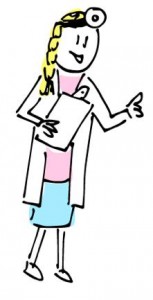



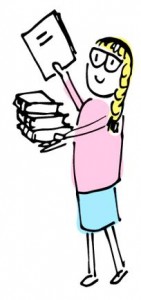

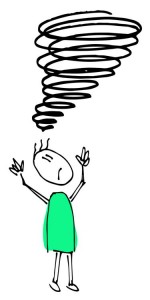
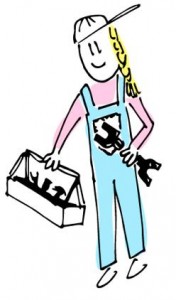
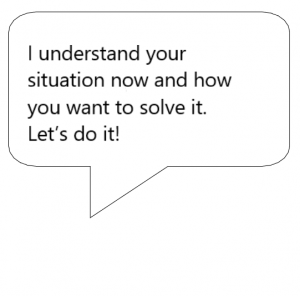
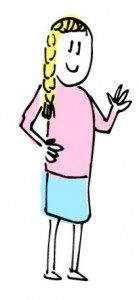

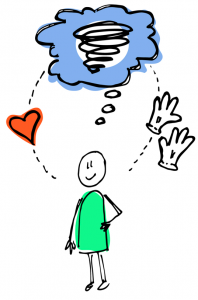


2 Comments
Far too many people/businesses believe you need subject ‘expertise’ knowledge to be an effective coach in an agile environment. This is a common myth without basis in fact. The coach’s expertise is in getting the team to act independently from an established leader-staff model and create solutions from their own cumulative team resources. Once this has been achieved you have a highly efficient unit able to respond to challenges without direct management intervention.
The key is in having the combination of trust and correct attitude as a ‘manager’ to create this. Too many managers become intoxicated with the power syndrome, thus inhibiting instead of assisting their teams.
The message is ‘The more you give away the more you get in return.’
Thanks for the article, Louise.
Hi Spartak,
Thanks for your comment, I appreciate you taking the time to share your perspective!
I am curious about what in the article prompted you to write and what, in your experience, the connection between the four stances and the power syndrome is?
Thanks,
Louise